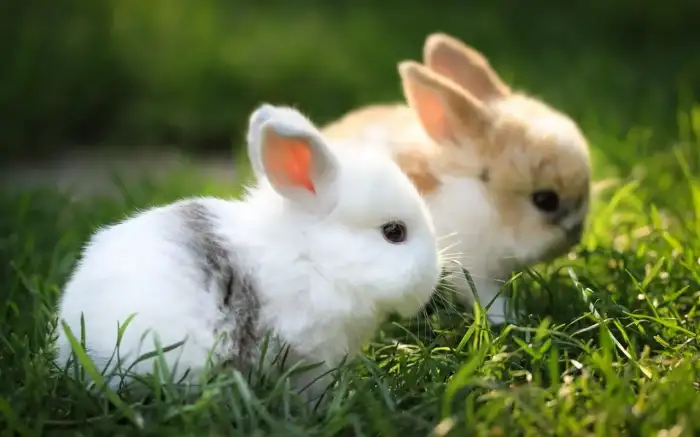Raising rabbits can be a rewarding venture, whether for pets, show, or meat production. Understanding the proper breeding methods and taking necessary precautions can lead to a successful rabbitry. In this comprehensive guide, we will explore effective rabbit breeding techniques, the essential care needed for rabbits, and important considerations to keep in mind.

1. Understanding Rabbit Breeding Basics
The Importance of Selecting Breeding Stock
Before starting your rabbit breeding program, it’s crucial to select high-quality breeding stock. Look for rabbits that exhibit desirable traits such as good health, temperament, and breed characteristics.
Ideal Breeding Age
- Does (female rabbits): Typically, does should be bred between 5-8 months of age.
- Bucks (male rabbits): Bucks can breed from 6 months of age, but it’s advisable to wait until they are fully developed.
2. Setting Up a Breeding Environment
Choosing the Right Housing
A proper housing setup is essential for successful rabbit breeding. Ensure that the living space is spacious, clean, and secure.
Key Housing Features
- Size: Each rabbit should have enough space to move around comfortably.
- Ventilation: Good airflow is crucial to prevent respiratory issues.
- Temperature Control: Rabbits are sensitive to extreme temperatures, so ensure a stable environment.
3. Nutrition for Breeding Rabbits
Feeding a Balanced Diet
A well-balanced diet is vital for the health and reproductive success of your rabbits. The diet should include hay, fresh vegetables, and high-quality pellets.
Essential Nutritional Components
- Fiber: Essential for digestive health; ensure unlimited access to hay.
- Protein: Important for breeding; consider protein-rich feeds during the breeding season.
- Fresh Water: Provide constant access to clean, fresh water.
4. Breeding Techniques
Natural Breeding vs. Artificial Insemination
There are two main methods of breeding rabbits: natural breeding and artificial insemination.
Natural Breeding
This is the most common method. Introduce the buck to the doe’s cage for mating. Monitor the pair for successful mating.
Artificial Insemination
While less common, this method can be beneficial for specific genetic pairings. It requires specialized knowledge and techniques.
5. Caring for Pregnant Does
Recognizing Pregnancy
Pregnancy in rabbits, known as gestation, lasts about 28-32 days. Signs of pregnancy may include:
- Increased nesting behavior
- Weight gain
- Changes in appetite
Preparing for Kindling
Create a comfortable nesting area for the doe a week before she’s due. Use straw or hay for bedding and provide privacy.
6. Post-Kindling Care
Caring for Newborn Kits
After kindling, it’s crucial to ensure the health of both the mother and her kits. Kits are born hairless and blind, relying completely on their mother.
Key Considerations
- Nursing: Ensure that the doe nurses her kits regularly.
- Environmental Conditions: Keep the nesting area warm and draft-free.
- Monitor Health: Watch for any signs of distress in the mother or kits.
7. Weaning Kits
When to Wean
Kits can typically be weaned at around 4-6 weeks of age. Monitor their development and ensure they are eating solid food before weaning.
Transitioning to Solid Food
Introduce high-quality pellets and hay gradually. Ensure they have constant access to fresh water.
8. Health and Wellness
Regular Health Checks
Regular health checks are essential to prevent disease and maintain the overall well-being of your rabbits.
Common Health Issues
- Dental Problems: Regularly check for overgrown teeth.
- Parasites: Keep an eye out for signs of fleas, mites, or worms.
- Respiratory Issues: Be aware of any signs of sneezing or nasal discharge.
9. Record Keeping
Maintaining Accurate Records
Keeping detailed records of breeding dates, health checks, and lineage can help you manage your rabbitry effectively.
Benefits of Record Keeping
- Helps in tracking breeding successes and failures.
- Aids in making informed breeding decisions.
- Facilitates the identification of genetic issues.
10. Legal and Ethical Considerations
Understanding Local Regulations
Before starting your rabbitry, research any local laws or regulations regarding animal breeding and welfare.
Ethical Breeding Practices
Always prioritize the health and well-being of your rabbits. Avoid breeding for profit at the expense of animal welfare.
Conclusion
Breeding rabbits can be a fulfilling experience, provided you are informed and prepared. By understanding the breeding process, maintaining a healthy environment, and adhering to ethical practices, you can ensure the success of your rabbitry. Remember, each rabbit is an individual, and their needs may vary. With dedication and care, you’ll be well on your way to thriving rabbit breeding.

Comments (0)